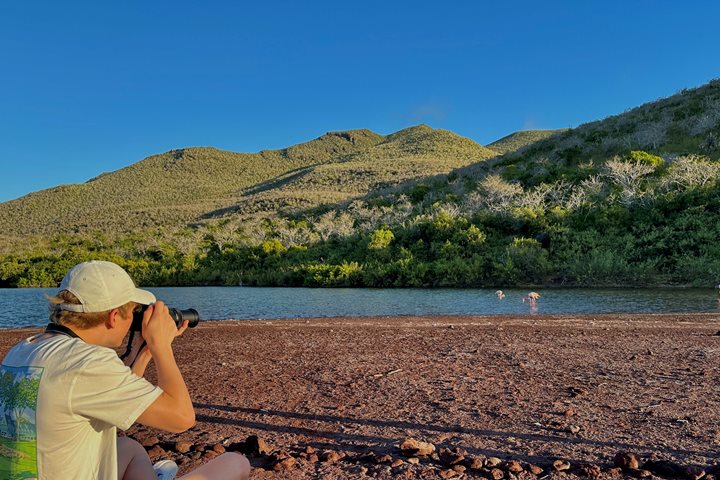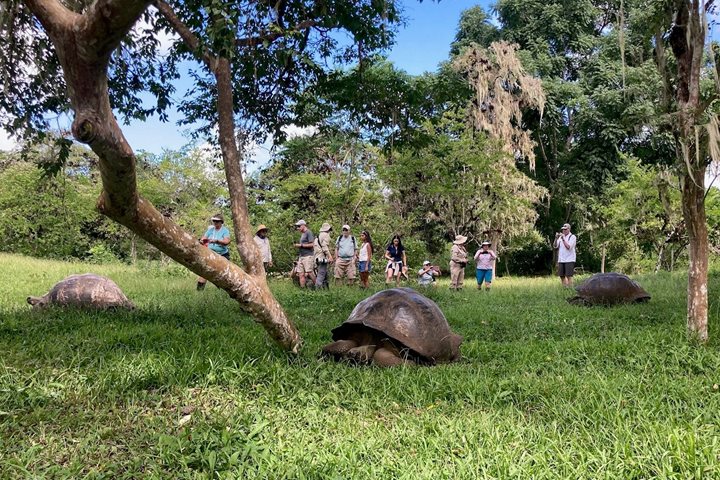In the almost 500 years that have passed since their discovery in 1535 by Fray Tomás de Berlanga, Bishop of Panama, the Galapagos Islands have been part of various stories. At first, the English used the islands as a hideout after looting Spanish galleons loaded with gold and silver bound for Europe. Then the islands were visited by whalers, who turned the area into their Eastern Pacific operations center. Part of the War of 1812 between the United States and England took place in the Galapagos Islands. Finally, in 1832, the Republic of Ecuador took possession of the Galapagos, initiating a new era in the natural and human history of the islands. One of the islands witnessed and participated in all these historical events. I am referring to Floreana Island, which was initially baptized as Charles by the English. During the Republican Era of Ecuador in 1832, the island was renamed Floreana in honor of the country's first president, Juan José Flores.
Our activities began early in the morning with a visit to Post Office Bay. In 1793, English Captain James Colnett installed a barrel with the purpose of using it as a mail system to create a link between the sailors who visited the island and their relatives. Nowadays, this tradition is still maintained, and our guests had the opportunity to leave behind their postcards to be hand-delivered to their final recipient in the future.
After our visit to the barrel, we boarded Zodiacs to travel around the mangroves. The water here is never very deep, and it is always possible to see the seabed. We observed sea turtles, sea lions, and even sharks. The most interesting thing about our ride was spotting a group of flamingos that walked along a small beach. It was great to see these formidable creatures floating in the sea and feeding on small crustaceans. Their pink plumage contrasted with the green vegetation and the white sand. What a great morning, and what an excellent start to a day that was going to be spectacular.
After breakfast, National Geographic Islander II arrived at Champion Islet to discover the incredible underwater world that surrounds not only Floreana but also the neighboring islets. We were able to observe colorful fish and rays. Playful sea lions were our best company during snorkeling.
After lunch, we had the opportunity to listen to a lecture on naturalist Charles Darwin by Professor Donald Johanson. Professor Johanson has been our guest of honor this week and is the world-renowned paleontologist who found the fossilized skeleton of Lucy, an Australopithecus Afarensis discovered in the Afar Desert in Ethiopia in 1974. When the partial skeleton was found, it was the oldest and most complete early human ancestor ever found, with 40% of the skeleton unearthed. Lucy has served as an important reference that has broadened researchers' understanding of the customs and anatomy of early human ancestors, which has increased our understanding of human evolution.
At 3:30 p.m., we boarded Zodiacs and headed for the beach on Punta Cormorant. The sand looked dark green, a result of a high concentration of olivine, a mineral abundant in the area. Walking inland, we observed the lagoon behind the beach before we arrived at the second beach. Unlike the first, this one was completely white, mostly the result of the erosion of coral exoskeletons. We walked along the beach, and we observed many tortoises in the sea. We could see their heads as they waited for darkness so they could begin the long task of nesting at the highest part of the beach. Very close by, we observed whitetip reef sharks and many stingrays, offering our guests great photo opportunities.
Just before sunset, we arrived at a blue-footed booby nesting site. Just a few weeks ago, the chicks were completely fluffy. They are now juveniles. It was almost 6:00 p.m. when we boarded Zodiacs to return to National Geographic Islander II. The mountains began to cloud over with the mysterious halo that is typical on the island. We will remember this great day on a beautiful island called Floreana.







